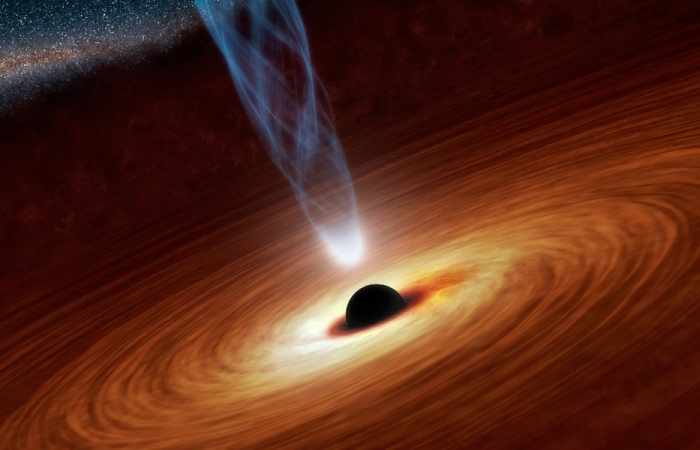There's one thing that could unseat a supermassive black hole in this manner, the researchers say: gravitational waves.
First predicted by Albert Einstein more than 100 years ago, gravitational waves are ripples in space-time caused by the universe’s most cataclysmic events – just as concentric circles form on the surface of a pond after you toss in a heavy rock. Last year, researchers at the Laser Interferometer Gravitational-Wave Observatory (LIGO) showed that this phenomenon exists when they detected gravitational waves produced by the merger of two black holes.
In a paper that will publish next week in the journal Astronomy & Astrophysics, Marco Chiaberge and his colleagues say that the weird behaviour of the black hole in galaxy 3C 186 is likely the result of gravitational waves from another pair of colliding black holes.
The roving black hole was detected in an image taken by Nasa's Hubble Space Telescope. The fuzzy splotch that was galaxy 3C 186 contained an incredibly bright spot, a quasar. This wasn't unusual: a quasar is the nucleus of a galaxy, and it's bright because of the disk of gas that surrounds the black hole at its centre.
What caught Chiaberge's eye was the quasar's location, 35,000 light-years from the centre of its galaxy.
“I thought we were seeing something very peculiar,” he said in a Nasa news release.
Mr Chiaberge, who works at the Space Telescope Science Institute (STScI) and Johns Hopkins University, asked fellow astronomers for their observations from a range of other instruments, including the Chandra space observatory and the Sloan Digital Sky Survey's telescope in New Mexico. The former measures X-rays, the latter specialises in detecting redshift, the stretching of light that is detected as something travels through space.
Their observations confirmed the Hubble finding. They also helped pin down the black hole's mass (equal to that of a billion suns) and the speed at which the gas around it was travelling (4.7 million mph).
Meanwhile, the Hubble image offered a clue about what dislodged the black hole from its galaxy's centre. The host galaxy bore faint, arc-shaped features called tidal tales, which are produced by the gravitational tug-of-war that takes place when two galaxies collide. This suggested that galaxy 3C 186 had recently merged with another system, and perhaps their black holes merged too.
What happened next, scientists can only theorise. Chiaberge and his colleagues suggest that as the galaxies collided, their black holes began to circle each other, flinging out gravity waves “like water from a lawn sprinkler”, as Nasa described it. If the black holes had unequal masses and spin rates, they might have sent more gravitational waves in one direction than the other. When the collision was complete, the newly merged black hole would have then recoiled from the strongest gravitational waves, shooting off in the opposite direction.
“This asymmetry depends on properties such as the mass and the relative orientation of the back holes' rotation axes before the merger,” Colin Norman of STScI and Johns Hopkins University, a co-author on the paper, said in the Nasa news release. “That's why these objects are so rare.”
There is an alternative explanation for the roving black hole, the researchers noted. It's possible that the quasar only appears to be located in galaxy 3C 186, but is actually just behind it – explaining why galaxy's nucleus seems to be off-centre.
But if that's the case, the scientists say, researchers should have detected the quasar's actual host galaxy – and they haven't yet. If Chiaberge’s interpretation is correct, it can help astronomers understand what happens in a black hole merger.
Even without knowing the source of the behaviour, the scientists have drawn some pretty incredible conclusions about it. They estimate that the energy required to jettison a black hole like the one in 3C 186 would be equivalent to 100 million supernovas. Now the black hole is moving so fast it could cover the distance between the Earth and the Moon in a mere three minutes. In about 20 million years, the astronomers predict, it will escape its galaxy and roam alone through the universe forever.
Whatever is going on with this bizarre black hole, it's certainly had a wild ride.
/Washington Post/
More about: #blackhole
















































